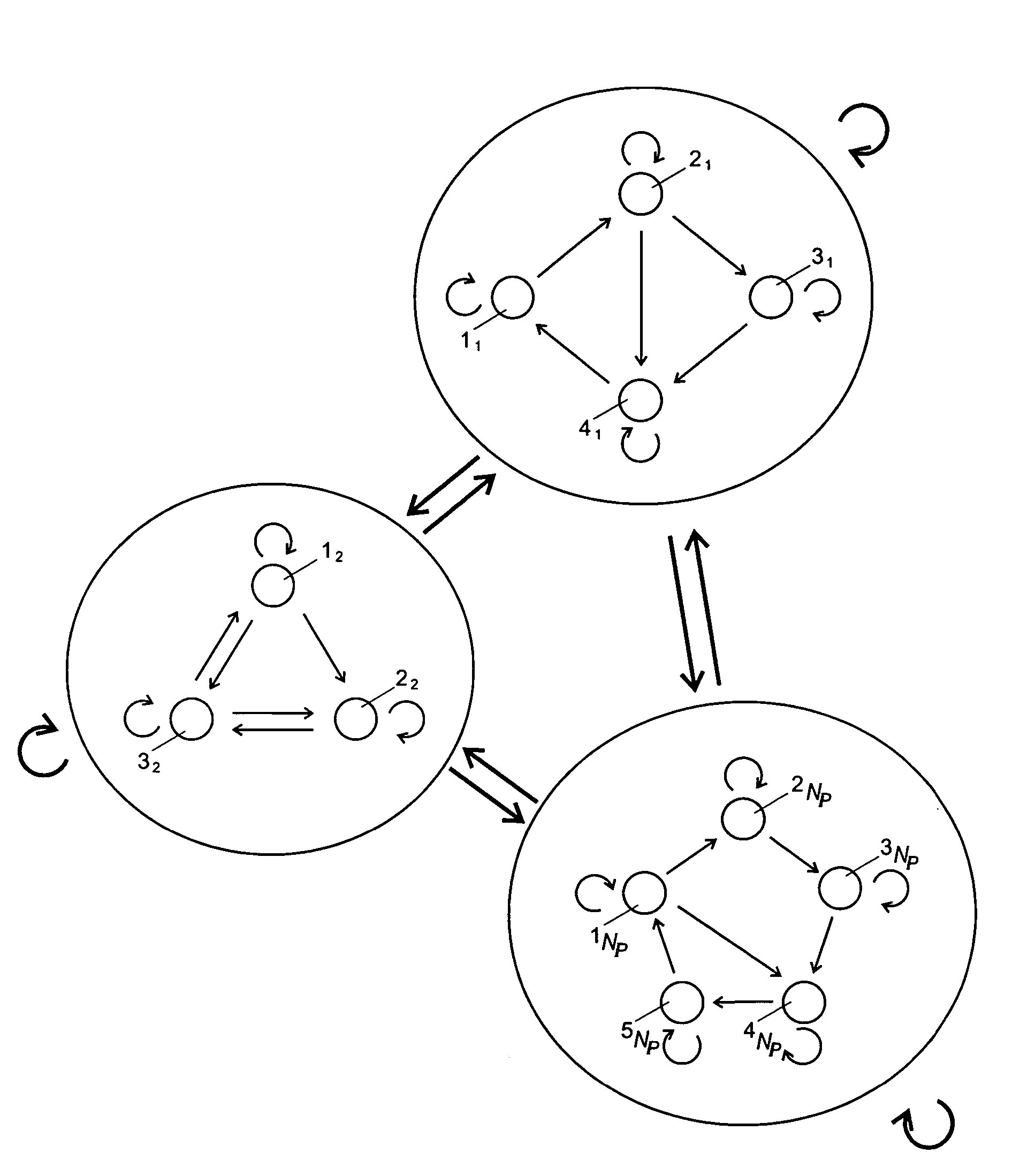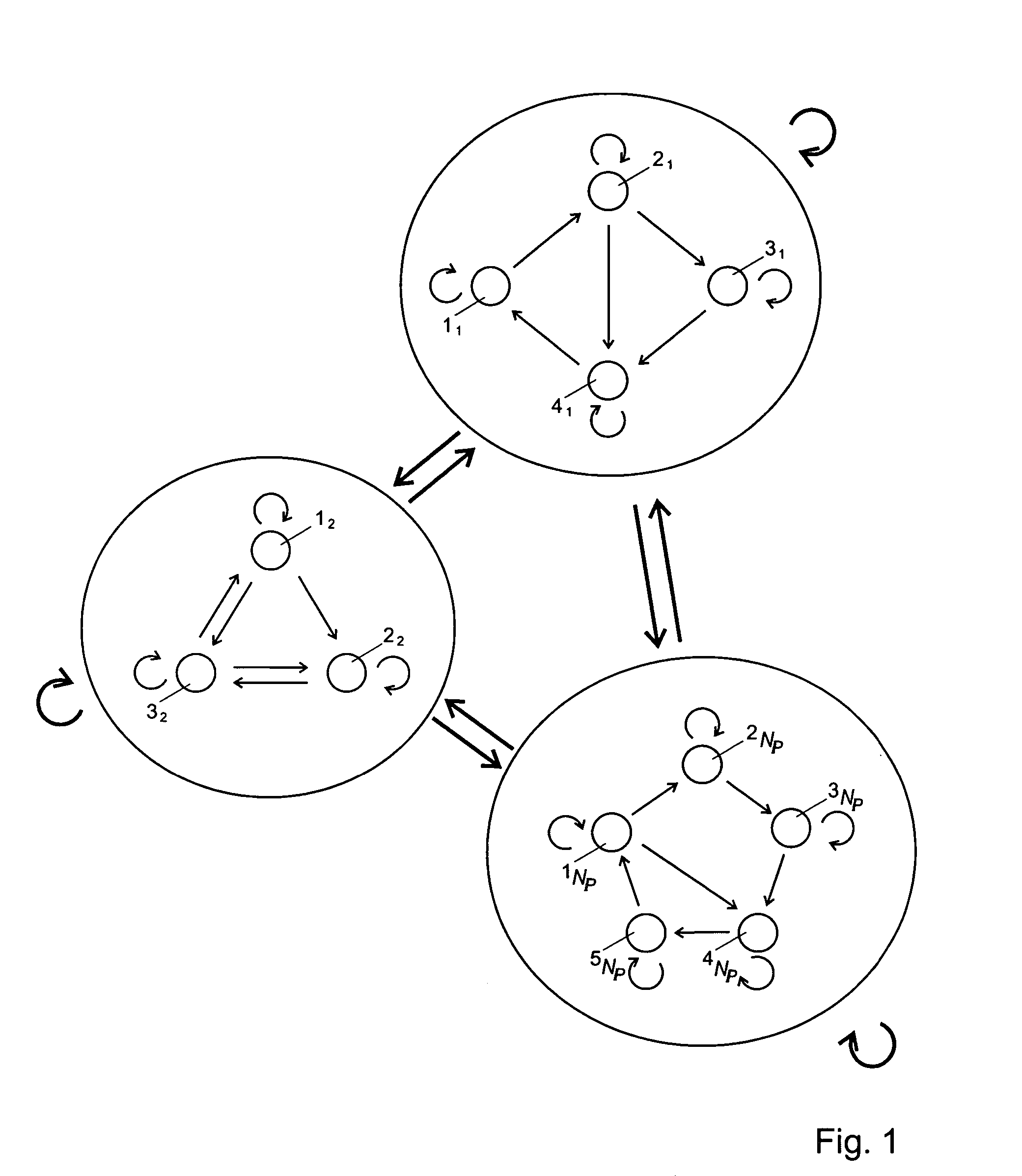Computerized method for ranking linked information items in distributed sources
- Summary
- Abstract
- Description
- Claims
- Application Information
AI Technical Summary
Benefits of technology
Problems solved by technology
Method used
Image
Examples
Embodiment Construction
[0044] We will now describe different embodiments of the invention. The description also includes different theoretical models, and proposes one ranking algebra which allows to formally specify different methods of composing rankings, as well as a model of a set of linked items based on layered Markov Models.
[0045] In the following of the description, depending on the context, we use the words items, documents, state or pages for designating objects one want to rank. Depending on the context, we use the words groups, sub-sets, phases, domains for designating various sets of objects that may be ranked locally.
[0046] The first observation we make is that there exists a certain likelihood that a local link, i.e. a link that references an item, such as a document, within the same local group or domain, typically a Web site, is likely to be semantically more “precise” since the author of the link is likely to be better informed about the semantics and particular importance of the local...
PUM
 Login to View More
Login to View More Abstract
Description
Claims
Application Information
 Login to View More
Login to View More - R&D
- Intellectual Property
- Life Sciences
- Materials
- Tech Scout
- Unparalleled Data Quality
- Higher Quality Content
- 60% Fewer Hallucinations
Browse by: Latest US Patents, China's latest patents, Technical Efficacy Thesaurus, Application Domain, Technology Topic, Popular Technical Reports.
© 2025 PatSnap. All rights reserved.Legal|Privacy policy|Modern Slavery Act Transparency Statement|Sitemap|About US| Contact US: help@patsnap.com



